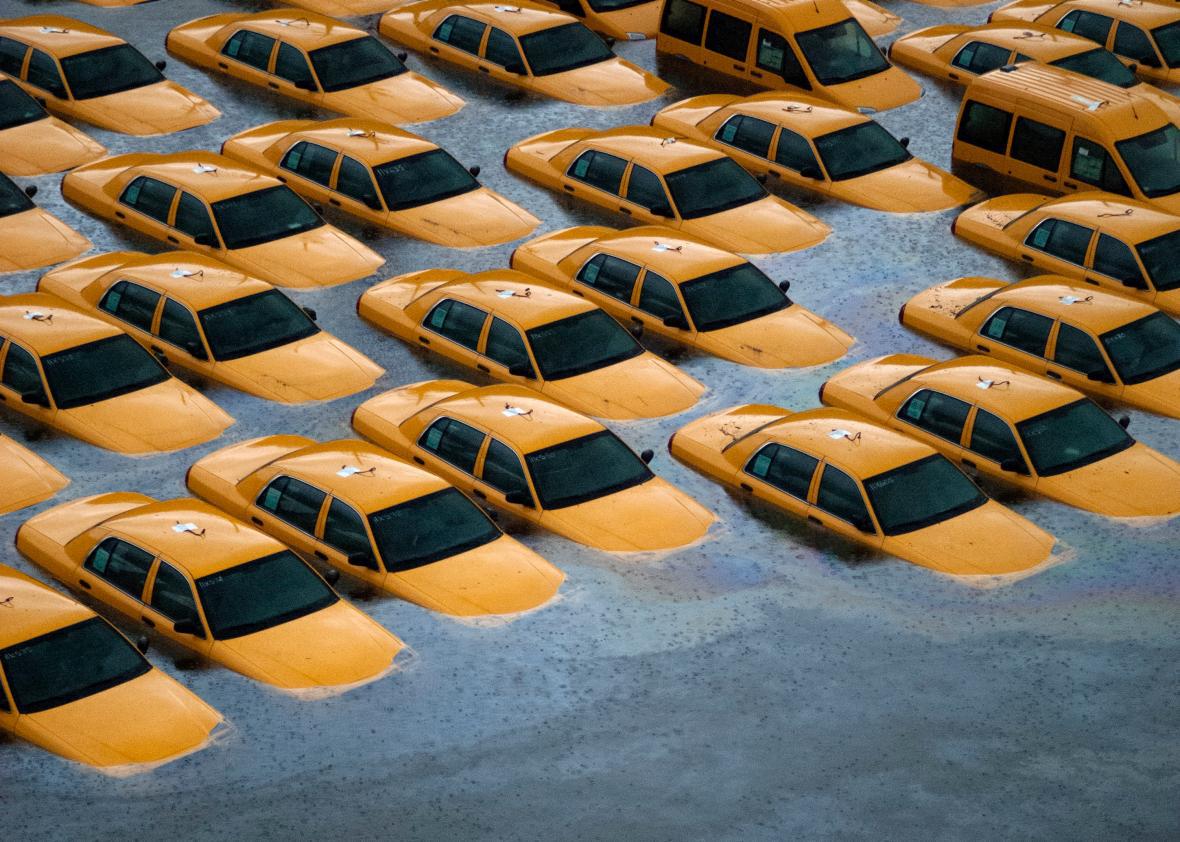The driverless taxi—sleek, efficient, and blissfully free of obligatory small talk with chatty drivers—has long been the daydream of many a regular urban cab rider. Taxi drivers, of course, gripe at the idea of autonomous vehicles prowling their streets and snatching up business. But their grumblings haven’t stopped Google and Uber, among other companies, from investigating self-driving taxis as a real possibility for the cities of the future. Google’s self-driving cars are already on the road in several states, and the company is rumored to be expanding into taxi services. The head of Uber, Travis Kalanick, has publicly spoken many times about his interest in replacing drivers with robots, hence Uber hiring a reported 40 or more people from Carnegie Mellon’s robotics lab.
What was once a pipe dream is closer than ever to becoming a reality. Now, government research is pointing to the automation of cab-driving as the industry’s next major disruption—and a majorly beneficial one, at that.
Scientists from the Lawrence Berkeley National Laboratory, a lab in California that conducts research on behalf of the U.S. Department of Energy, published a comprehensive report Monday on the implications of self-driving taxis. The results are astonishing: After an extensive economic and environmental study, the researchers, Jeffery Greenblatt and Samveg Saxena, found that autonomous taxis would vastly cut back on cities’ greenhouse gas emissions. Self-driving vehicles in shared transit systems could dramatically reduce the amount of energy that is used per mile. The researchers also found that—despite the expensive production costs of autonomous cars—the replacement of traditional cabs with these vehicles would mean lower taxi fares.
That’s no small thing. Over the years, the costs of taxi rides in major cities have increased to headache-inducing levels. In 2012, New York’s taxi commission voted to raise fares by as much as 17 percent—a hike that, in combination with other unpleasant factors such as uncleanliness, caused the experience of hailing a cab in the city to become a last resort, or “something of an urban surrender.” And the “surge pricing” of companies like Uber has forced customers to sometimes shell out two or three times the usual rate of a ride. Greenblatt and Saxena suggest that driverless taxis offer a cheaper alternative:
In New York City in 2005, only 24 percent of taxi fares went toward vehicle costs, with 57 percent going to drivers … driver income constitutes $97,600 per year, which could more than cover the incremental cost of autonomous vehicle technology [estimated at $150,000]. Even using current costs, if financed using identical model assumptions for vehicle capital, this would amount to $36,500 per year, 37 percent of New York City taxi driver income and 21 percent of total taxi fares. Therefore, autonomous taxis could replace current taxis at current autonomous vehicle costs and possibly even lower fares, providing an important early market niche.
These findings back up a 2013 proposal from researchers at the Earth Institute at Columbia University, which suggested that a replacement of New York’s 13,000 yellow cabs with 9,000 self-driving ones could lower costs per mile to just $0.50. That study also found that self-driving cars could cut the average wait time for customers from five minutes down to 36 seconds.
Greenblatt and Saxena are not speculating on a hypothetical event in the distant future. The deployment of self-driving taxi fleets is not as far off as it would seem: As Google and Uber continue to experiment with their autonomous vehicle designs, other companies such as Nissan are also throwing their hats into the ring. With more companies developing self-driving cars each year, it won’t be long until they all turn their eye to autonomous taxi services. It’s an industry of untapped profit. And it could also help save the planet. Couple that with the safety bonus of driverless cars, and it sounds like a no-lose situation. But one thing the Department of Energy–sponsored report doesn’t touch upon is how the radical disruption of the taxi industry would affect the people already embedded in it—dispatchers, cab company workers, and, most of all, the roughly 178,000 taxi drivers in the country. If self-driving taxi fleets are to become a reality in the upcoming years, the displacement of these populations is an issue we need to address with the utmost urgency.
